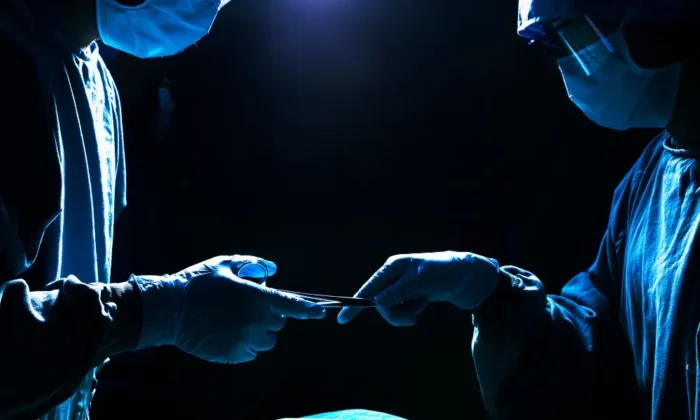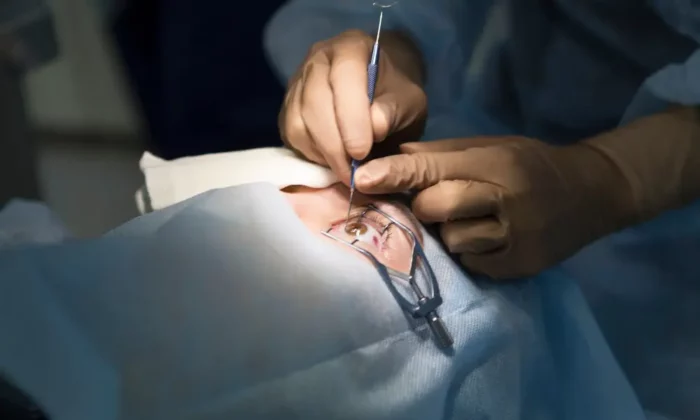Have you ever heard of DALK? If that sounds like a riddle, you’re not alone. But for those facing certain corneal conditions, understanding DALK could be a game-changer. Dive into this read to unravel the intricacies of DALK Cornea Surgery – a modern solution promising swift recoveries and reduced complications. From its groundbreaking technique to its myriad benefits and even its cost-effectiveness, we’ve got it all laid out for you. Let’s embark on this enlightening journey to see if DALK is the sight-saving solution you’ve been searching for!
Contents
What is DALK Cornea Surgery?
Deep Anterior Lamellar Keratoplasty, commonly referred to as DALK, is a cutting-edge corneal transplant procedure. Unlike traditional methods that replace the entire cornea, DALK focuses on replacing only the damaged or diseased front layers, leaving the healthy back layers intact.
The procedure begins with a careful separation of the cornea’s front layers from the healthier back layers. Once separated, the damaged front layers are meticulously removed. A healthy donor cornea is then placed in position and sutured to the patient’s remaining natural cornea.
DALK is particularly ideal for patients with conditions like keratoconus, where the cornea’s front portion becomes thin and cone-shaped but retains a healthy back end. By preserving the patient’s healthy endothelial cells, DALK minimizes the risk of graft rejection and leads to a smoother post-operative journey.
The Surgical Procedure: Step by Step
Undergoing any surgical procedure can be daunting. Understanding the steps involved can alleviate some anxieties. Let’s break down the DALK cornea surgery into its main stages:
Preparation
- Patient Prepping: The patient’s eye is cleaned and prepped to ensure a sterile environment. Anesthetic drops or a block is applied to numb the eye, ensuring the patient feels no pain during the procedure.
- Positioning: The patient is then positioned under the operating microscope.
Trephination
- A partial thickness cut is made into the cornea using a trephine, a surgical instrument specifically designed for this. This cut helps delineate the area of the cornea that needs to be removed.
Layer Separation
- The top layers of the cornea are carefully separated from the Descemet’s membrane (the innermost layer) using a special spatula or by injecting air or fluid. This is a crucial step, ensuring only the diseased or damaged portions are removed, leaving the healthy posterior layer intact.
Removal of the Diseased Cornea
- The damaged or diseased anterior layers of the cornea are then delicately removed, preserving the healthy Descemet’s membrane below.
Graft Preparation
- The donor cornea is prepared by removing its endothelial layer, making it suitable for transplantation.
Placement of the Donor Graft
- The prepared donor tissue is then positioned onto the patient’s remaining healthy corneal layer.
Securing the Graft
- Fine sutures are used to secure the donor graft in place, ensuring it aligns perfectly with the patient’s remaining cornea.
Final Checks and Conclusion
- The surgeon will perform final checks to ensure there’s no air or fluid trapped between the graft and the patient’s natural cornea and to ensure the graft is secure. The eye may then be patched, and the patient is moved to the recovery room.
For those considering DALK surgery for cornea, it’s comforting to know that while intricate, the procedure is backed by years of medical advancement, ensuring a higher degree of precision and success.
Key Advantages of DALK Over Traditional Methods

DALK has rapidly emerged as a preferred corneal transplant procedure for specific conditions, especially when the innermost layer of the cornea remains healthy. This modern approach offers several compelling benefits over traditional corneal transplant techniques:
- Faster Recovery: With DALK, patients often experience a quicker healing process. Since the healthy back layer of the patient’s cornea remains untouched, the eye tends to recover more rapidly, allowing patients to return to their regular activities sooner.
- Reduced Surgical Time: The DALK procedure is generally quicker than traditional full-thickness corneal transplants. This not only decreases the time a patient spends in the operating room but also reduces the potential risks associated with longer surgical procedures.
- Increased Patient Comfort: As the procedure is less invasive, post-operative discomfort is typically minimized. Patients report fewer instances of pain, itching, or discomfort compared to traditional corneal transplant methods.
- Lower Risk of Graft Rejection: One of the most significant advantages of DALK is the reduced risk of graft rejection. By retaining the patient’s healthy endothelial cells, the body is less likely to recognize the donor tissue as foreign, thus lowering the chances of the body rejecting the new graft.
- Preservation of Structural Integrity: By keeping the cornea’s back layer intact, DALK ensures that the eye retains more of its original structural strength. This preservation reduces the risk of complications such as eye perforation during or after the surgery.
In conclusion, while traditional corneal transplant methods have their place and are necessary for certain conditions, DALK provides a more refined, patient-friendly approach for specific cases, making it a top choice for both surgeons and patients.
Recovery Expectations and Care Post-Surgery
 DALK cornea surgery is renowned for its effectiveness, but as with any medical procedure, proper post-operative care is key to achieving the best outcomes. Here’s what patients can expect in terms of recovery and the necessary care following the surgery:
DALK cornea surgery is renowned for its effectiveness, but as with any medical procedure, proper post-operative care is key to achieving the best outcomes. Here’s what patients can expect in terms of recovery and the necessary care following the surgery:
- Immediate Post-Op: Once the surgery is completed, the operated eye will often be shielded using a protective eye patch or shield to prevent any accidental rubbing or pressure. It’s normal for patients to experience some discomfort or a gritty sensation in the eye.
- The First Week: Initially, vision may be hazy or cloudy. Gradually, as the eye heals, clarity will improve. Avoid activities that strain the eyes, like reading, watching TV, or using computers, should be limited.
- Subsequent Weeks: Follow-up visits to the ophthalmologist are essential. These allow the doctor to monitor the healing process and ensure there are no complications.
- Long-Term Care: Even after complete healing, it’s advisable to wear protective eyewear during activities that pose a risk of injury. Watch for Symptoms such as sudden vision changes, increased redness, pain, or light sensitivity, and consider reporting to the ophthalmologist immediately.
It’s paramount to remember that every individual’s healing process is unique. Adhering to the doctor’s instructions, attending all follow-up visits, and maintaining a clean environment will set the stage for optimal recovery.
Cost Analysis: Is DALK Worth It?
The DALK procedure, a modern solution for specific corneal conditions, typically costs around Rs. 55,000. While this might seem like a significant initial expense, it’s crucial to factor in the overarching benefits. Opting for DALK offers patients reduced risks of graft rejection, quicker recovery times, fewer post-op complications, and enhanced vision stability. These advantages not only translate to better health outcomes but can also lead to long-term savings by potentially eliminating the need for further treatments or interventions.
Conclusion
Your eyesight is precious, and any challenges related to your cornea deserve attention from experienced professionals. With modern solutions like DALK surgery, there’s a ray of hope for many dealing with corneal issues. Remember, early detection and timely intervention can make all the difference in preserving and enhancing your vision. If you suspect or know you’re facing cornea-related issues, Cornea transplant Surgery at EyeMantra can help. The expert team at EyeMantra is here to guide and assist you. Book your free appointment now at 9711116605 and take the first step towards clearer vision.
FAQs
1. Is DALK surgery safe?
Yes, DALK surgery is considered safe. Like any surgical procedure, there’s a risk of complications, but with DALK, the risks are significantly minimized. The surgical technique is specifically designed to retain the back layer of the cornea, reducing the chance of graft rejection and other potential complications. However, it’s essential to ensure you’re under the care of an experienced ophthalmologist and follow all post-operative guidelines.
2. What is the recovery time for DALK eye surgery?
The initial healing period after DALK surgery is usually between 1-2 weeks. However, it may take several months for the vision to stabilize fully. The total recovery period varies depending on individual healing processes and how rigorously post-operative care instructions are followed. Regular follow-ups with your ophthalmologist are essential to monitor healing and detect any potential issues early.
3. What is the success rate of DALK surgery?
DALK surgery boasts a high success rate, with many patients experiencing significant vision improvement post-operation. The technique’s specific focus on preserving the back layer of the cornea contributes to a reduced chance of graft rejection, making the success rate of DALK notably higher than some traditional methods. As with any surgical procedure, the success rate can also depend on the surgeon’s expertise and the patient’s individual health and adherence to aftercare.



